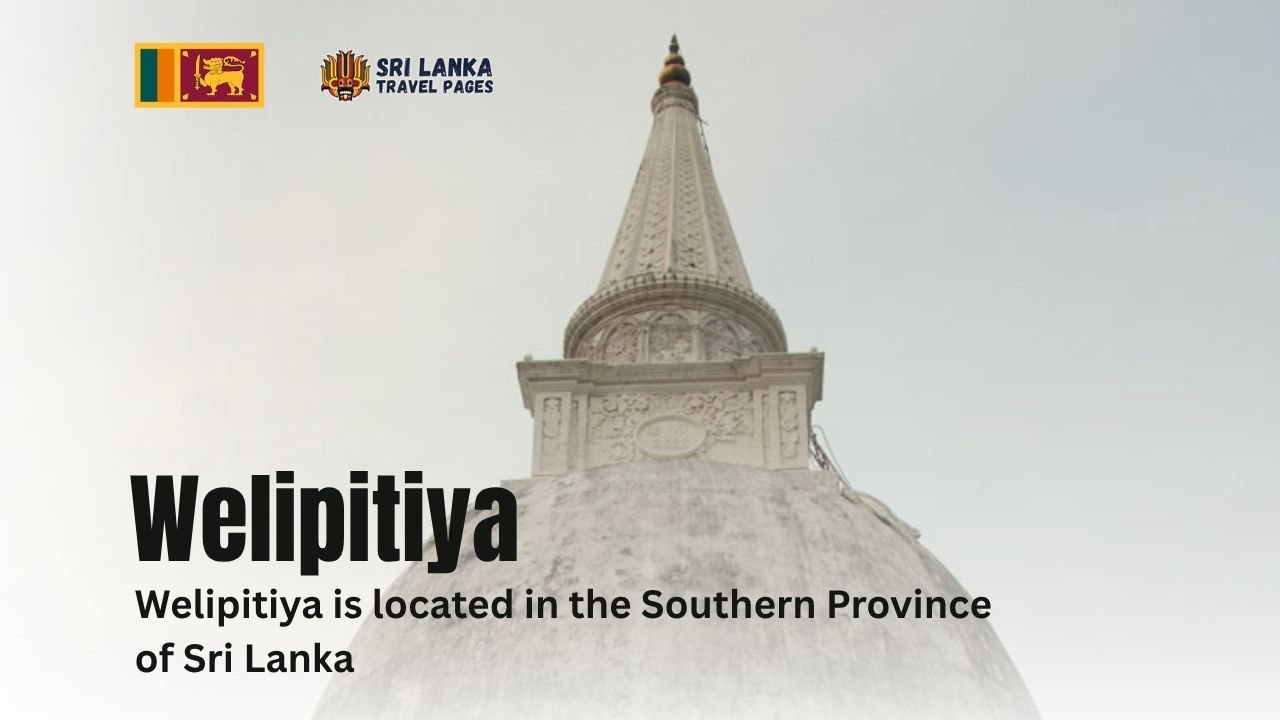
韦利皮蒂亚, 韦利皮蒂亚位于斯里兰卡南部省份马特勒区,是一个宁静的村庄,以其葱郁的绿地、绵延的稻田和紧密团结的乡村社区而闻名。在这里,您可以一窥斯里兰卡原汁原味的乡村生活,农业在当地居民的生计中扮演着核心角色。传统的农耕方式、椰林和家庭菜园共同构成了该地区的自然魅力。韦利皮蒂亚周围风景秀丽,是热爱自然、远离喧嚣都市、寻求宁静的理想之地。它位于韦利皮蒂亚分区秘书处内的战略位置,方便前往马特勒附近的城镇、市场和文化景点。村民们热情好客的天性也为这里增添了魅力,让每一次到访都留下难忘的回忆。无论您是想探索蜿蜒的乡村道路,品尝新鲜的当地农产品,还是仅仅沉浸在宁静的氛围中,韦利皮蒂亚都能为您提供一个令人耳目一新的斯里兰卡乡村之旅。
总人口
59,873
GN 部门
38
韦利皮蒂亚:乡村魅力与社区精神——斯里兰卡南部省份的宁静休憩之所
坐落于斯里兰卡南部省份马塔拉区, 韦利皮蒂亚 韦利皮蒂亚是一个宁静的村庄,以其郁郁葱葱的绿色景观、丰富的农业遗产和温暖的社区精神而闻名。这里椰林环绕,稻田纵横,乡村道路风景优美,让您可以真实地体验斯里兰卡传统的乡村生活。在这里,时间的流逝更加缓慢,自然之美与日常生活的简朴融为一体。
乡村生活与传统之门
韦利皮蒂亚的魅力在于其宁静的环境和深厚的文化底蕴。农业是这个社区的核心产业,水稻种植、椰子采摘和香料种植构成了其经济支柱。游客可以逛逛熙熙攘攘的新鲜农产品市场,体验热情的村民招待,并参加季节性的文化和宗教庆典。
经济、生活方式和社区
农业是韦利皮蒂亚经济的核心,小规模贸易、手工艺和家庭园艺为其提供了支撑。该地区依靠自给自足的生活,家庭通常种植水果、蔬菜和香料。社区生活紧密相连,佛教寺庙、基督教教堂和其他宗教场所营造了和谐团结的氛围。
周围环境热带植被茂盛,为自然漫步和摄影提供了绝佳的机会。四季皆宜的稻田一年四季都呈现出五彩缤纷的景象,乡村小径通往溪流、家庭花园和传统的村舍。宁静的氛围使韦利皮蒂亚成为远离喧嚣都市生活的理想去处。
教育、服务和地方行政
韦利皮蒂耶拥有当地学校、小型诊所和满足日常需求的村落中心。为了获得更先进的设施,居民们通常会前往附近的马塔拉和韦利格默等城镇。 韦利皮蒂亚分区秘书处 监督当地治理、基础设施和社区发展项目。
到达韦利皮蒂亚——交通和交通
🚖 乘坐出租车/网约车 – 从马塔拉镇出发 30 分钟内即可到达。
🚌 坐巴士 – 通过连接马塔拉和附近村庄的区域公交线路连接。
🚆 乘火车 – 最近的火车站位于韦利格默和马特勒,有连接韦利皮蒂耶的当地交通。
| GN代码 | 姓名 |
|---|---|
| 005 | 瓦哈拉·卡南克北部 |
| 010 | 尼维蒂韦尔博卡 |
| 015 | 波兰巴·卡南克·诺斯 |
| 020 | 普胡拉赫纳 |
| 025 | 波兰巴·卡南克南 |
| 030 | 瓦哈拉·卡南克南 |
| 035 | 纳拉瓦纳 |
| 040 | 佩内蒂亚纳西部 |
| 045 | 佩内蒂亚纳东部 |
| 050 | 韦拉纳 |
| 055 | 乌杜卡瓦北部 |
| 060 | 乌杜卡瓦南 |
| 065 | 哈拉拉 |
| 070 | 巴塔拉赫纳 |
| 075 | 北科克马杜瓦 |
| 080 | 萨哈班杜·科克马杜瓦 |
| 085 | 贾姆布雷戈达东部 |
| 090 | 帕迪利·科克马杜瓦 |
| 095 | 贝拉莱利亚 |
| 100 | 贾亚维克拉马普拉 |
| 105 | 瓦拉卡皮蒂亚北部 |
| 110 | 瓦拉卡皮蒂亚东 |
| 115 | 瓦拉卡皮蒂亚南 |
| 120 | 梅鲁帕 |
| 125 | 乌鲁维蒂亚 |
| 130 | 瓦塔格达拉穆拉 |
| 135 | 穆纳马尔帕 |
| 140 | 韦利皮蒂亚 |
| 145 | 帕拉拉 |
| 150 | 西詹布雷戈达 |
| 155 | 伊巴瓦拉 |
| 160 | 维莱各达 |
| 165 | 波拉拉 |
| 170 | 马杜拉戈达 |
| 175 | 卡普瓦塔 |
| 180 | 德尼皮蒂亚中心 |
| 185 | 德尼皮蒂亚西 |
| 190 | 德尼皮蒂亚东 |
| 服务 | 联系电话 | 附加信息 |
|---|---|---|
| 🚓 韦利皮蒂耶警察局 | +94 41 225 8222 | 负责韦利皮蒂耶及周边村庄的公共安全、预防犯罪和交通管制的当地执法办公室。 |
| 🏥 韦利皮蒂耶分区医院 | +94 41 225 8212 | 政府医院为居民和附近社区提供门诊、住院、产科和急诊护理。 |
| 🏥 私人医疗诊所 – 韦利皮蒂亚 | 因提供商而异 | 为当地居民服务的小型私人诊所;提供门诊咨询、小型治疗和基本实验室服务。 |
| 🏛️ 韦利皮蒂亚分区秘书处 | +94 41 225 8205 | 负责监督韦利皮蒂亚分部的当地治理、公共管理、发展项目和基本服务。 |
| 🧾 卫生部办公室 – 韦利皮蒂亚 | +94 41 225 8250 | 协调部门内的公共卫生服务、疫苗接种、产妇护理和环境卫生检查。 |
参观韦利皮蒂亚的最佳时间
游览韦利皮蒂亚的最佳时间是十二月至四月,此时气候温暖,阳光明媚,非常适合探索郁郁葱葱的乡村风光和进行户外活动。白天平均气温在26°C至31°C之间,降雨量较少,非常适合自然漫步、参观农业,以及体验周边村庄的文化。
五月至九月,西南季风带来更频繁的降雨和偶尔的雷暴。虽然户外活动可能会受到影响,但这段时间非常适合欣赏稻田、椰子种植园和香料园的葱郁绿意。这也是享受慢节奏乡村生活和室内文化传统的好时机。
十月和十一月是过渡季节,雨水适中,气温宜人。这段时间游客可以体验到乡村的魅力、季节性的农业活动,以及相对较少的人群。总的来说,十二月到四月是探索韦利皮蒂亚自然美景和社区精神的最佳时期。
如何到达 – 韦利皮蒂亚
韦利皮蒂亚是斯里兰卡南部省份马特勒区一片宁静的乡村,周围环绕着郁郁葱葱的稻田、椰林和风景如画的村庄。韦利皮蒂亚位于韦利格默东北部,从马特勒、加勒和韦利格默等主要城镇均可通过公路轻松抵达。无论您乘坐巴士、嘟嘟车还是私家车前往韦利皮蒂亚,都能欣赏到斯里兰卡南部乡村的壮丽景色。以下是一份旅行指南,可帮助您规划行程。
| 城市 | 距离 | 预计行程时间 | 路线 |
|---|---|---|---|
| 马塔拉 | 18公里 | 25 – 30分钟 | |
| 威利格玛 | 12 公里 | 20 – 25分钟 | |
| 加勒 | 38公里 | 50 – 60分钟 | |
| 本托塔 | 78公里 | 1.5 – 2 小时 | |
| 科伦坡堡 | 142公里 | 2.5 – 3 小时 |
交互式地图
地理概况 – 韦利皮蒂亚
韦利皮蒂亚是斯里兰卡南部省马特勒区一片宁静的乡村,位于马特勒镇东北约18公里处,距离韦利格默约12公里。韦利皮蒂亚周围环绕着茂盛的稻田、椰林、肉桂种植园和小村庄,让您可以真实地体验斯里兰卡传统的乡村生活。风景如画的乡村道路、水渠和支撑当地经济的农田构成了这片土地的特色。与沿海城镇相比,内陆社区的生活节奏较慢,主要以农业、香料种植和家庭手工业为主。韦利皮蒂亚虽然主要是居住和农业中心,但也得益于其毗邻马特勒、韦利格默和加勒等南部主要目的地的优势,对于有兴趣探索斯里兰卡乡村风情的游客来说,这里交通便利。
行政信息
- 省: 南部省
- 区: 马特勒区
- 部门秘书处: 韦利皮蒂亚分区秘书处
- 邻近地区: 韦利格默、阿库雷萨、马塔拉、科塔波拉
地方经济和服务 – 韦利皮蒂亚
韦利皮蒂耶的经济主要以农业为主,水稻种植、椰子采摘、肉桂种植和家庭园艺构成了当地居民的生计支柱。许多家庭还从事小规模香料生产、奶牛养殖和传统手工艺。乡村环境孕育了自给自足的生活方式,当地市场为居民提供新鲜农产品和生活必需品。虽然农业是村庄的支柱产业,但杂货店、裁缝服务和运输服务等小型企业也为村庄的经济活动做出了贡献。
韦利皮蒂耶的公共服务包括韦利皮蒂耶分区医院、当地医疗诊所以及负责管理公共卫生项目的卫生部办公室。教育由公立学校提供,学生也可前往马塔拉和韦利格默等附近城镇接受高等教育。韦利皮蒂耶分区秘书处负责监督行政事务、基础设施维护和社区发展项目,确保为当地居民提供基本服务。
韦利皮蒂亚通过当地公路与邻近城镇相连,并有定期巴士服务往返于马特勒、韦利格默和加勒。嘟嘟车和摩托车是当地最常见的交通工具,为短途出行提供了灵活的选择。尽管靠近繁华的沿海城镇,韦利皮蒂亚仍保留着宁静的乡村氛围,将农业传统与日益壮大的社区精神融为一体。
社区与文化 – 韦利皮蒂亚
韦利皮蒂亚是一个紧密联系的乡村社区,传统的斯里兰卡乡村生活与南部省份的自然美景相得益彰。当地居民主要信奉僧伽罗佛教,少数信奉基督教和穆斯林的居民也为该地区的文化多样性做出了贡献。韦利皮蒂亚的生活深深植根于农业传统,农民家庭世世代代传承着技能、价值观和习俗。社会联系紧密,邻里和大家庭在日常生活和社区活动中互相支持。
宗教和文化活动发挥着重要作用,一年一度的卫塞节、寺庙佩拉赫拉节、教堂节日和伊斯兰节日将社区凝聚在共同的传统中。佛教寺庙是精神和文化的中心,而教堂和清真寺则加强了不同宗教之间的和谐。这些场所不仅是礼拜的中心,也是文化交流、教育和社交聚会的中心。
韦利皮蒂亚还通过民间音乐、传统舞蹈和乡村体育活动来传承其文化遗产,这些活动通常在丰收节和新年庆祝活动期间举行。当地青年积极参与学校活动、体育活动和社区服务项目,促进团结和责任共担。强烈的归属感加上对传统的尊重,使韦利皮蒂亚成为斯里兰卡南部省一个温暖而文化丰富的村庄。
节日与文化 – 韦利皮蒂亚
韦利皮蒂亚位于斯里兰卡南部省份的乡村中心地带,有着深厚的传统价值观和宗教信仰。该社区主要信奉僧伽罗佛教,少数族裔也信奉基督教和穆斯林,丰富了其文化底蕴。主要的年度庆祝活动包括: 卫塞节, 波森, 埃萨拉, 圣诞节, 斋月,以及 僧伽罗和泰米尔新年每个节日都让家人、邻居和朋友欢聚一堂,共享欢乐。
期间 卫塞节 和 波森当地的寺庙都装饰着色彩缤纷的灯笼和描绘佛陀生平故事的装饰品。 丹萨尔 摊位为游客提供免费餐食,以表达同情和社区服务。 埃萨拉佩拉赫拉 附近的寺庙会举办传统的击鼓、舞蹈和游行,吸引邻近村庄的居民。基督教教堂会在节日期间举行特别弥撒。 圣诞节 和 复活节,而穆斯林社区则观察 斋月 和 开斋节 举行精神聚会和节日聚餐。
这 僧伽罗和泰米尔新年 四月的节日是最令人期待的活动之一,包括传统游戏、文化表演以及甜咸美食的制作。丰收节、学校活动和当地集市也让韦利皮蒂亚的文化精神全年充满活力。这些庆祝活动共同体现了该村浓厚的传统、信仰和社区和谐的氛围。
交通和连通性 – 韦利皮蒂亚
韦利皮蒂亚位于斯里兰卡南部省份马特勒区,通过当地和区域公路网络与周边城镇交通便利。韦利皮蒂亚位于韦利格默和马特勒的内陆,主要通过 贝利亚塔-阿库雷萨-韦利格默公路网 以及连接村庄的道路。这一战略位置方便前往南部主要目的地,同时保留了其乡村魅力。
公共交通可通过 定期巴士服务 连接韦利皮蒂亚、马塔拉、韦利格默、阿库雷萨以及周边村庄。对于短途旅行, 三轮车(嘟嘟车) 是热门出行方式,方便前往市场、学校和当地行政办公室。私家车和摩托车也是居民通勤和运输农产品的常用方式。
虽然韦利皮蒂亚没有火车站,但最近的车站位于 威利格玛 和 马塔拉,两地均在20至30分钟内即可轻松抵达。乘客可以从这些车站前往科伦坡、加勒、马特勒以及南部铁路沿线的其他主要城市。韦利皮蒂亚拥有丰富的本地公交线路、嘟嘟车服务以及附近的铁路连接,为居民和游客提供可靠的交通连接。
环境意义和可持续性——Welipitiya
韦利皮蒂亚位于斯里兰卡南部省郁郁葱葱的乡村内陆,周围环绕着肥沃的稻田、椰子种植园、肉桂园和天然水道。这些农业和自然景观不仅支撑着当地居民的生计,也为该地区的生物多样性做出了贡献。湿地、溪流和小片森林为鸟类、传粉昆虫和小型野生动物提供了栖息地,使韦利皮蒂亚成为该地区生态网络的重要组成部分。
当地的农业实践正在向更可持续的方式发展,一些农民采用有机种植技术,减少化肥的使用。社区主导的植树计划、土壤保护措施和水资源管理项目有助于在保护环境的同时保持农业生产力。居民们还参与乡村清洁活动,以减少塑料垃圾,并保持水道不受污染。
学校和社区团体通过自然教育、家庭园艺工作坊和传统知识分享,在提高环保意识方面发挥着重要作用。通过将古老的农耕智慧与现代可持续发展举措相结合,韦利皮蒂亚致力于保护其乡村之美,并确保农业、社区生活和自然环境之间的平衡共存。
旅游和景点 – 韦利皮蒂亚
韦利皮蒂亚坐落于斯里兰卡南部省份的乡村腹地,为游客提供一处静谧的世外桃源,体验原汁原味的乡村生活。虽然韦利皮蒂亚的商业化程度不如沿海旅游胜地,但它却以其葱郁的绿色景观、稻田、椰林和肉桂种植园令人着迷。对于寻求文化沉浸、农业体验和斯里兰卡乡村生活魅力的游客来说,这里是理想的目的地。
游客可以探索传统的农耕实践,与当地社区互动,感受乡村生活的韵律。该地区遍布着宁静的 佛教寺庙、小村庄的神社以及穿过农田的风景优美的步道。季节性节日提供了体验民间传统、当地美食和热情好客村庄的机会。
韦利皮蒂亚也是游览马塔拉、韦利格默和阿库雷萨附近景点的便捷基地。附近的热门景点包括韦利格默的金色沙滩、历史悠久的 马塔拉堡以及郁郁葱葱的内陆瀑布。韦利皮蒂亚拥有宁静的氛围、热情的社区以及毗邻的文化和自然地标,为斯里兰卡南部繁华的旅游热点地区提供了一个令人耳目一新的选择。
教育与机构 – Welipitiya
韦利皮蒂亚虽然主要是一个农业村,但却非常重视教育,将其作为社区发展的基础。当地学校包括: 韦利皮蒂亚中央学院 和 区域小学 为韦利皮蒂亚及周边村庄的儿童提供必要的学术和课外活动机会。这些机构旨在培养兼具学术知识和生活技能的全面发展的学生。
一个网络 公立学校 确保全民接受教育,提供科学、艺术、商业和技术课程。此外,还有几个 私人辅导班 和 英语语言课程 帮助学生提高学业成绩和沟通技巧。马塔拉和韦利格默等周边城镇的职业培训中心提供农业、木工、酒店管理和信息通信技术等领域的实践教育,帮助农村青年探索多元化的职业道路。
社区参与学校活动、环保项目和文化活动,强化了教育作为威利皮蒂亚凝聚力的作用。威利皮蒂亚日益重视现代学习方法,同时又保留传统价值观,正在培养一代受过良好教育的一代,为村庄乃至更广阔的发展做出贡献。
医疗保健和医疗服务 – Welipitiya
韦利皮蒂亚通过公共医疗机构、社区卫生项目和私人医生的结合,为农村人口提供基本医疗服务。主要的公共医疗机构是 韦利皮蒂耶分区医院提供门诊、妇幼保健、紧急急救和小型外科手术服务。医院配备了专业的医护人员,满足韦利皮蒂耶及周边村庄居民的一般医疗需求。
这 卫生官(MOH)办公室 – 韦利皮蒂亚 在社区卫生、监督疫苗接种项目、孕产妇护理、登革热预防、卫生计划和营养意识宣传活动中发挥着至关重要的作用。此外, 私人诊所 和 药店 提供方便的日常医疗保健,而传统的 阿育吠陀治疗中心 提供草药和整体的健康方法。
为了获得专门或先进的医疗服务,居民通常会前往附近城镇的大型医院,例如马塔拉、韦利格默或加勒,包括 卡拉皮蒂亚教学医院。通过平衡公共服务、私人选择和传统治疗方法,韦利皮蒂亚确保其社区能够获得基本且符合文化的医疗保健。
为什么要参观韦利皮蒂亚——乡村美景与文化遗产
韦利皮蒂亚坐落在斯里兰卡南部省份宁静的乡村,是一个迷人的乡村目的地,以其葱郁的稻田、茂密的椰林和热情好客的村民而闻名。与熙熙攘攘的旅游胜地不同,韦利皮蒂亚为游客提供了一个放慢脚步、沉浸于原汁原味的乡村生活,并领略斯里兰卡内陆自然美景的机会。
从漫步风景秀丽的乡村道路,到参观历史悠久的佛教寺庙,韦利皮蒂亚诚邀您体验南部省份根深蒂固的传统。当地市场、季节性节日和农业活动展现了当地社区与土地的紧密联系。无论您是想体验乡村生活的韵律、了解传统农耕,还是仅仅享受宁静的氛围,韦利皮蒂亚都能在斯里兰卡南部腹地为您提供一处令人耳目一新、文化底蕴深厚的世外桃源。
